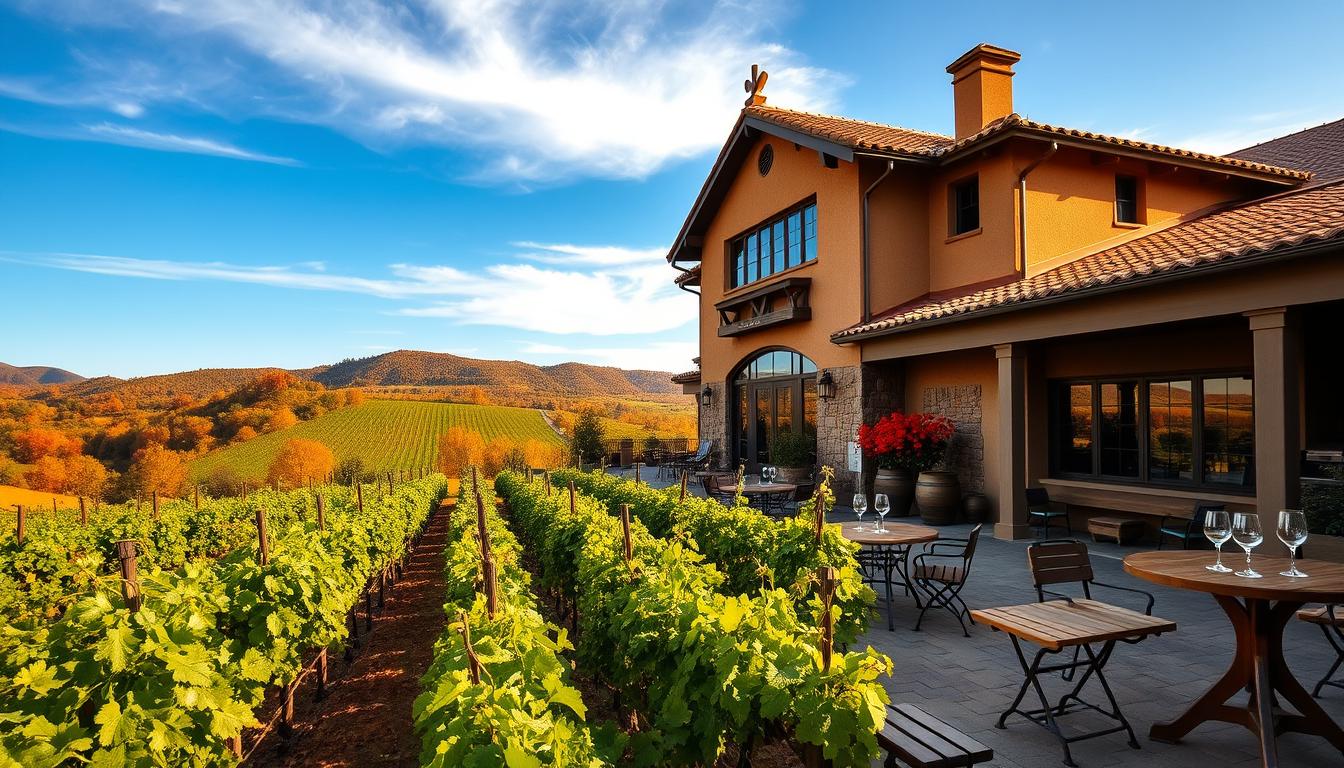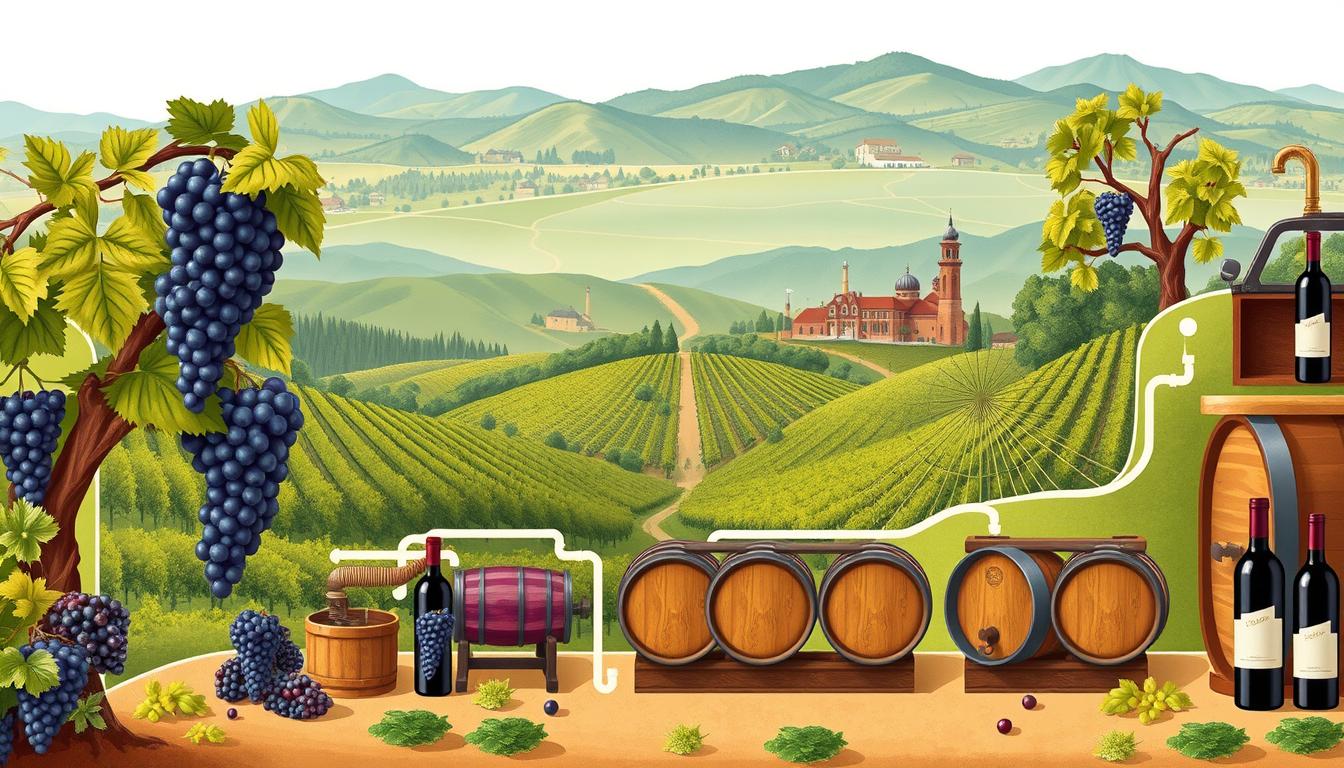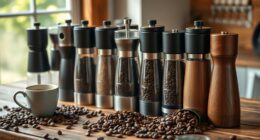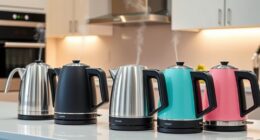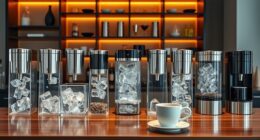Imagine standing in a sun-drenched vineyard, the gentle breeze carrying the sweet scent of ripening grapes, as you savor a glass of exquisite wine that tells a story of its land. Each sip you take is a journey through hills and valleys, an exploration of the artistry and dedication of renowned wine producers across the United States. Whether you’re a seasoned oenophile or just starting to appreciate the sophistication of fine wines, the world of award-winning wineries welcomes you with open arms.
From the prestige of California’s Napa Valley to the hidden gems nestled in Oregon and New York, the best vineyards in the nation leverage the unique characteristics of their regions to create excellent vintages. Here, you can taste wines that not only win awards but also create unforgettable experiences that linger long after the last drop is gone. It’s not just about wine; it’s about the connection, the history, and the exploration of flavors that resonate with every wine lover’s heart. Some of the best vineyards in the nation offer guided tours and tastings that allow visitors to immerse themselves in the beauty and craftsmanship behind every bottle. Whether you’re sipping on a crisp, fruit-forward white or indulging in rich, complex vintage red wine options, the dedication and passion of the winemakers shines through in every glass. These vineyards offer a true glimpse into the art and science of winemaking, making each visit a truly memorable experience for wine enthusiasts.
Join us as we journey through some of the top wineries across the U.S. — from special vineyard tours to tastings of prestigious wines, you’ll discover the charm and expertise that make these places truly special. Together, let’s celebrate the passion and labor behind the bottle, allowing you to deepen your appreciation for winemaking magic.
Key Takeaways
- Discover award-winning wineries across various prominent wine regions.
- Experience exceptional wines crafted by renowned wine producers.
- Learn about unique winery tours and tastings available to visitors.
- Explore the stories behind the finest wines that resonate with the land.
- Connect with a community of enthusiasts who share a passion for wine.
Introduction to America’s Wine Country
America’s wine country is a tapestry of breathtaking landscapes and rich flavors, stretching across various states. The heart of American viticulture thrives in renowned regions such as Napa Valley and Sonoma, both of which showcase the immense diversity of grape varieties and winemaking techniques.
With a total of 4,391 wineries, California stands at the forefront of this industry, boasting Napa Valley and Sonoma as leading producers. These areas have transformed into hotspots for wine tourism, inviting visitors to explore their picturesque vineyards and indulge in exquisite wine tasting experiences. Following California, Washington State emerges as the second-largest producer with 772 wineries, while Oregon holds a proud position with its 774 wineries, celebrated for producing outstanding Pinot Noir, Riesling, Chardonnay, and Gamay grapes.
Other states contribute uniquely to the landscape of American winemaking. New York, featuring the Finger Lakes and North Fork regions, hosts 395 wineries, captivating wine aficionados with its offerings. Virginia, with its 276 wineries concentrated around Charlottesville, is home to shining examples like Barboursville Vineyards. In Texas, the Texas Hill Country stretches over 9 million acres, housing 319 wineries and demonstrating the state’s burgeoning wine industry.
States like Pennsylvania and Ohio contribute their charm with 261 and 208 wineries, respectively, while Michigan and Missouri highlight historic winemaking traditions. Michigan, with 184 wineries, thrives around Lake Michigan Shore, showcasing grape varieties adapted to its climate. Missouri’s “Rhineland” region, known for the Norton grape, speaks to the rich heritage of winemaking dating back to the 1830s.
America’s wine country thrives not just on the vineyards but also on the passionate community united by a love for winemaking and wine tourism, making it a vibrant destination for enthusiasts and novices alike.
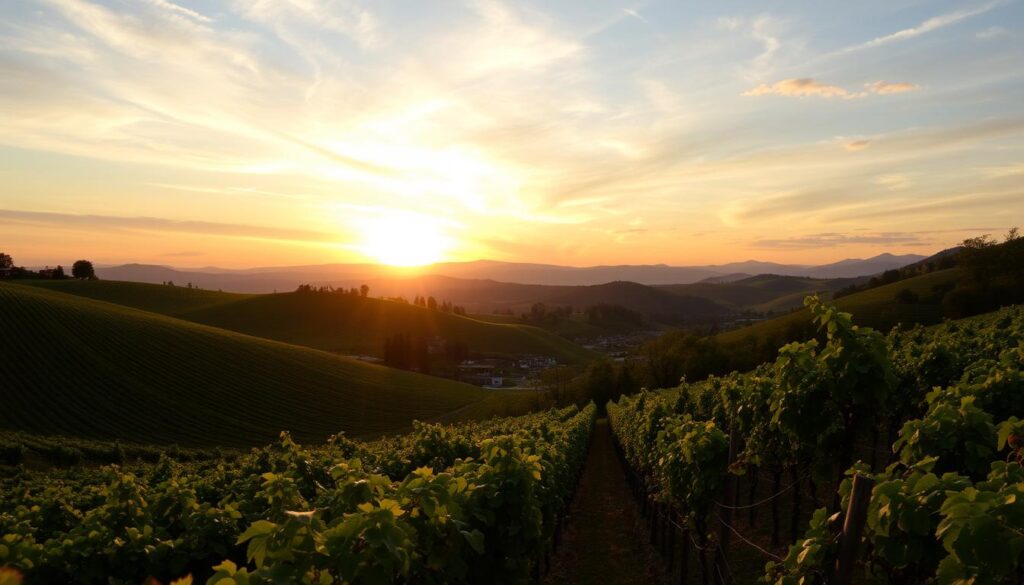
The Significance of Award-Winning Wineries
Understanding the significance of award-winning wineries reveals much about the wine industry. Recognized for their wine quality, these establishments often undergo rigorous judging processes that highlight their commitment to excellence. Wine awards serve as a beacon, guiding consumers toward superior products that enhance the overall consumer experience.
A notable distinction is made among prestigious awards. For example, the Grand Award is the highest accolade, boasting just 96 winners who typically offer wine lists with over 1,000 selections from top producers. This level of recognition underscores the dedication to offering exceptional unique blends that reflect distinct characteristics of their region.
In addition, the Decanter World Wine Awards involve the evaluation of 16,500 wines, with only 50 receiving the esteemed Best in Show medals. This rarity showcases the challenges and significance of receiving wine awards in today’s competitive market.
Consumers can choose from various pricing categories including inexpensive, moderate, and expensive lists, which also influences their options when selecting wines. Engaging with award-winning wineries guarantees that you are experiencing well-crafted wines that often bear labels showcasing prestigious recognitions, ranging from “Gold” to “Platinum” statuses.

Such accolades not only elevate the wineries’ status but also serve as a reassurance for you in your quest for high-quality options. By opting for award-winning selections, you support vineyards dedicated to crafting wines that elevate your tasting journey and showcase the art of winemaking.
Tank Garage Winery: Unique Tasting Experiences
Located in Calistoga, California, Tank Garage Winery offers an extraordinary experience that begins even before you taste their wines. Set in a reimagined 1930s gas station, this vintage winery creates an atmosphere that stands out in the Napa Valley. Their unique tasting experiences are led by a passionate team, showcasing a variety of limited-release wines not found in stores.
Vintages from a Vintage Gas Station
You will encounter a wide selection of wines created with obscure grape varietals like Teroldego, Cinsault, and Picpoul. The Onde Nostre red blend features Barbera, Sangiovese, and Freisa grapes sourced from San Benito County. Each tasting session typically lasts about an hour, allowing you to savor four different wines. The winery takes pride in producing sparkling pet nats, orange wines, and carbonic wines that push the boundaries of traditional winemaking.
The enthusiastic staff brings their own personalities to the tastings. From pancake flipping to rapping Biggie Smalls songs, their hidden talents make for an entertaining and memorable visit. Some of the team members share their favorite wines, enriching your tasting experience with their personal connections to the products.
Sustainably Crafted Wines
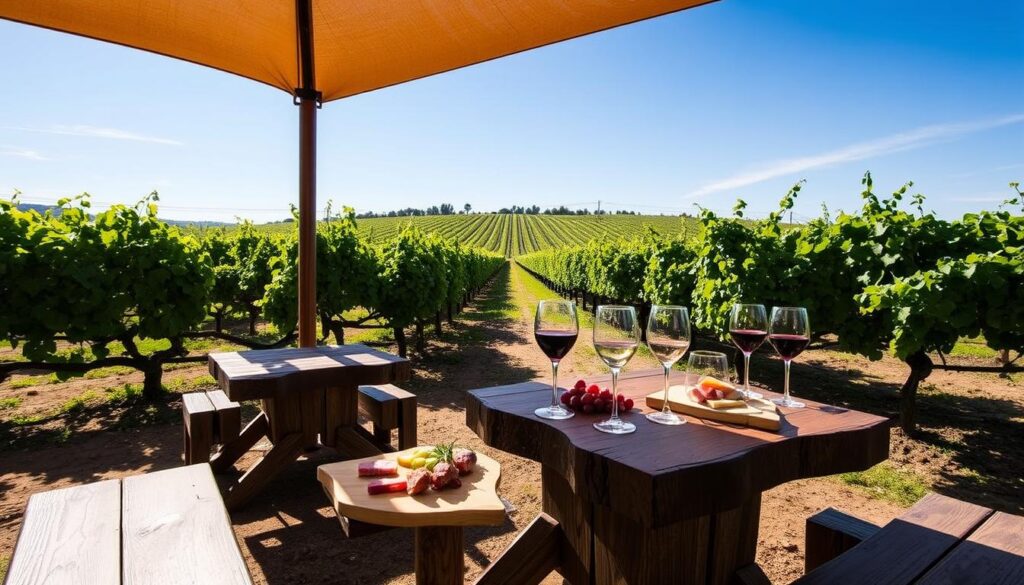
Sustainability plays a crucial role at Tank Garage Winery. Their eco-conscious practices in viticulture reflect a commitment to producing sustainable wines that celebrate community and nature. With each sip, you can appreciate the dedication to nature and artistry that enhances each bottle. They collaborate with various artists for label designs, reflecting a vintage aesthetic inspired by the 70s era. This focus on collaboration extends to other thematic experiences, connecting wine lovers to the broader community culture.
In addition to tastings, the winery curates suggestions for local artisan experiences, from gourmet cheeses to nature trails. Such offerings enable your visit to extend beyond just wine, enriching your appreciation for the area’s vibrant local culture while exploring the innovative approaches of Tank Garage Winery.
Wölffer Estate: A Hamptons Gem
Wölffer Estate, nestled in Sagaponack, New York, stands out among Hamptons wineries for its exceptional wines and breathtaking vineyard views. Spanning over 175 acres, this estate creates an inviting atmosphere perfect for a relaxing day of wine tasting and exploration.
Instagram-Worthy Setting
As you wander through the picturesque grounds, you will encounter photo opportunities at every turn. The elegant designs of both the vineyard and surrounding areas provide a setting perfect for capturing memories. The famous Summer in a Bottle rosé, which celebrates its 10th anniversary this year, embodies the essence of summer and reflects the beauty of the estate. Wölffer Estate has gained popularity not only for its wines but also for its aesthetic appeal, making it a hot spot for social media enthusiasts.
Special Events and Experiences
At Wölffer Estate, there is never a dull moment. The winery hosts a variety of engaging wine events throughout the year, which draw both locals and visitors alike. Unique experiences such as Yoga in the Vines and exclusive wine cruises enhance the sense of community that this estate fosters. In addition to wine production, Wölffer Estate also has a notable cider production line, showcasing its diversification in offerings. You are encouraged to make reservations; they recommend booking around two weeks in advance for groups to ensure you can partake in the exciting events lined up.
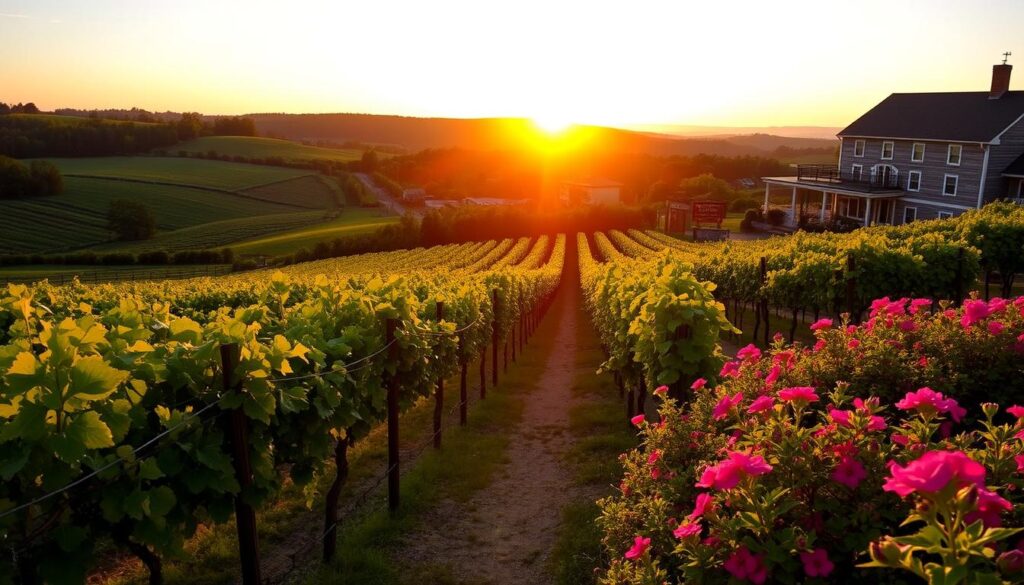
| Feature | Details |
|---|---|
| Vineyard Size | 175 acres |
| Iconic Wine | Summer in a Bottle Rosé |
| New Launch | Sauvignon Blanc |
| Special Events | Yoga in the Vines, Wine Cruises |
| Cider Production | Yes |
| Reservation Policy | 2 weeks in advance recommended for groups |
Experience Exclusivity at Croteaux Vineyards
Croteaux Vineyards, located in Southold, New York, stands out in the wine community as the only winery in the United States dedicated solely to rosé production. This exclusive commitment creates a unique experience for wine lovers. With each visit, you can explore the various vintages, a testament to the vineyard’s craftsmanship and dedication to quality.
The charm of Croteaux Vineyards extends beyond just its wines. The wine gardens, beautifully adorned with vintage décor and picturesque surroundings, provide an inviting atmosphere for guests. Picture yourself sipping on a glass of rosé while enjoying the serene ambiance of the vineyard.
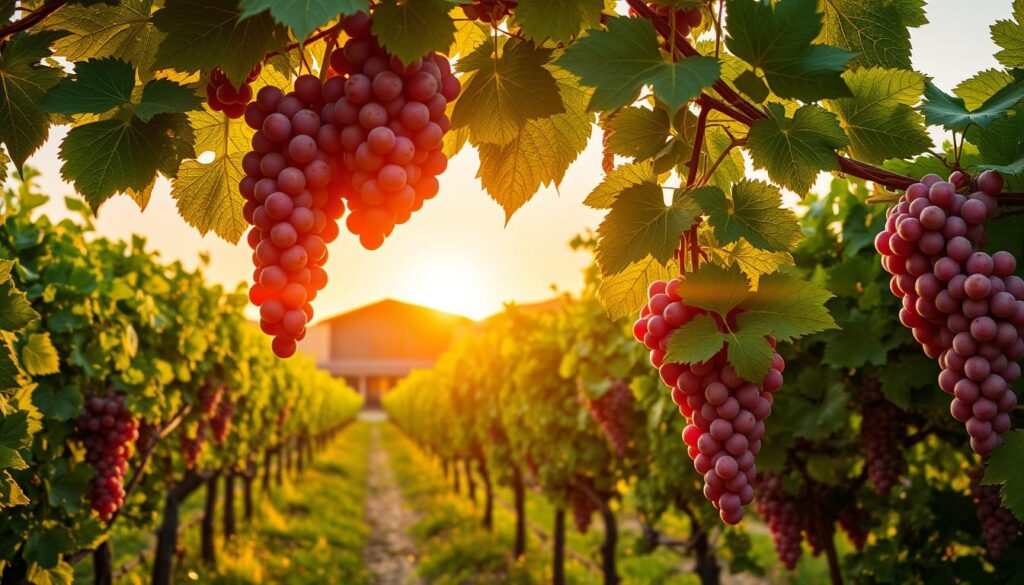
Visiting this captivating spot guarantees a unique tasting experience. The vineyard introduces new vintages every year, drawing both collectors and enthusiasts to its gates. Croteaux Vineyards takes pride in its passionate approach to viniculture, which elevates each glass of wine, ensuring unforgettable moments in a dreamy setting.
| Feature | Details |
|---|---|
| Exclusivity | Only produces rosé wines in the US |
| Location | Southold, New York |
| Wine Tasting Experience | Charming wine gardens with vintage décor |
| New Vintages | Introduced every year |
| Target Audience | Rosé lovers, collectors, wine enthusiasts |
Your visit to Croteaux Vineyards promises more than just wine; it offers a journey into a world where rosé reigns supreme, inviting you to indulge in the pleasures of fine wine surrounded by nature’s beauty.
Beneduce Vineyards: Where Music Meets Wine
Beneduce Vineyards stands out among the many New Jersey wineries, offering a unique blend of exquisite wines and a vibrant atmosphere. Located in Pittstown, this vineyard is renowned for its commitment to small lot production, ensuring each bottle showcases the nuances of its terroir. Guests can enjoy tastings on a charming stone patio that overlooks stunning landscapes, creating an idyllic setting for wine enthusiasts.
Small Lot Production Highlights
The focus on small lot production at Beneduce Vineyards enables the team to experiment with different varietals and techniques, resulting in wines that reflect the character of their estate-grown grapes. This meticulous approach allows you to appreciate the distinctive flavors and aromas in each sip, setting Beneduce apart from larger producers.
Fun Activities and Events
Beneduce Vineyards embraces a lively and communal spirit, hosting a calendar full of exciting events. The vineyard’s live music events draw in crowds, creating an energetic backdrop for an enjoyable wine tasting experience. Alongside food trucks serving delicious bites, you can spend quality time with friends and family amid a warm and inviting atmosphere.

Exploring Alta Colina’s Rhône-Style Wines
When it comes to discovering the best of Paso Robles wineries, Alta Colina stands out for its dedication to Rhône-style wines. Nestled at an elevation of 1,800 feet, this vineyard captures the essence of the unique terroir and microclimates that define the region. The high altitude allows grapes to benefit from both sunlight and cooler temperatures, producing distinctive flavors and characteristics in each vintage.
High-Altitude Wine Experience
At Alta Colina, the surroundings enhance your wine-tasting adventure. With over 40,000 acres of Paso Robles wine country nearby, you can engage your palate with a diverse array of wine options. Unique features like temperature swings of 40-50 degrees between day and night contribute to cultivating bold and richly flavored Rhône-style wines. The careful crafting of wines reflects a commitment to quality, leading to numerous accolades and gold medals at events such as the OC Fair.
Unique Accommodation Options
For those seeking vineyard stays, Alta Colina offers the charming Trailer Pond, where vintage campers provide whimsical accommodations amidst the stunning vineyard landscape. This delightful lodging option allows you to immerse yourself in the beauty of Paso Robles while enjoying convenient access to the winery’s tastings and tours. A stay here promises relaxation and an unforgettable experience, making Alta Colina a perfect destination for both wine enthusiasts and travelers alike.
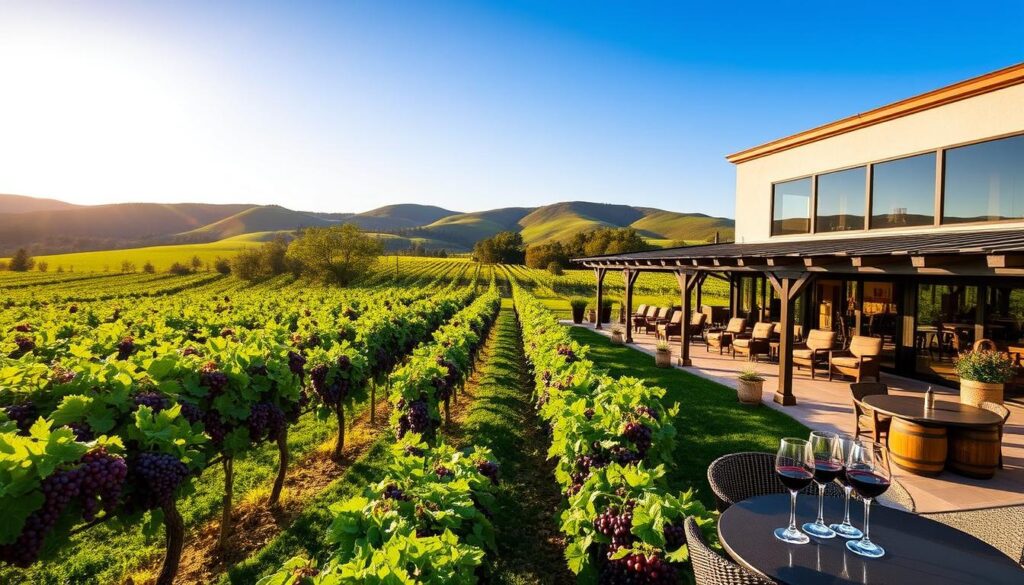
Discovering Folktale Winery’s Wine Garden
At Folktale Winery in Carmel, California, a captivating wine garden invites you to enjoy a unique experience unlike any other. This enchanting space combines nature’s beauty with delightful culinary offerings, creating a vibrant atmosphere that enhances your visit. You can indulge in exquisite wines while sampling delicious dishes like sweet patatas bravas and wood-fired avocado ceviche, skillfully paired to elevate your palate.
Folktale Winery, originally founded in 1982, has grown to be a renowned destination thanks to its commitment to remarkable service and ambiance. Under the guidance of winemaker Gregory Ahn, the winery continues to thrive with a focus on sustainability. The estate vineyard spans five acres, all of which are organically farmed, ensuring not only high-quality grapes but also a responsible approach to winemaking.
The winery embraces a philosophy of creative experiences, offering outdoor dining that transforms a traditional tasting setup into a memorable gathering place. Regular music events and the option to purchase locally crafted home goods only enhance the charm of your visit. Whether you are a wine aficionado or a culinary enthusiast, this wine garden at Folktale Winery promises an enriching experience that intertwines the best of wine and food.

| Features | Description |
|---|---|
| Location | Carmel, California |
| Size of Vineyard | 5 acres on-site; 300 acres in Arroyo Seco |
| Organic Practices | 100% organically farmed |
| Culinary Offerings | Sweet patatas bravas, wood-fired avocado ceviche |
| Unique Experiences | Outdoor dining, live music events |
| Awards | Recognized for service and ambiance |
Round Barn Estate: Music and Wine Fusion
Round Barn Estate stands as a premier destination among Michigan wineries, where the love of wine seamlessly merges with delightful live music events. Nestled in Baroda, its vibrant atmosphere attracts visitors seeking both relaxation and entertainment. Known for its Jammin’ in the Vineyard series, this estate hosts a variety of performances throughout the year, catering to those in search of memorable experiences in a picturesque setting.
Live Music Events and Their Popularity
Live music events play a significant role in creating an inviting ambience at Round Barn Estate. Guests revel in the tunes while savoring a glass of wine, fostering an enjoyable environment perfect for unwinding with friends or family. The popularity of these events illustrates the estate’s ability to cater to diverse tastes, making it a sought-after venue for both local residents and visitors alike. From vibrant performances to intimate acoustic sets, the estate truly showcases Michigan’s rich musical talent.
Family-Friendly Activities
Round Barn Estate offers a range of family-friendly experiences that appeal to guests of all ages. With spacious grounds and designated picnic areas, families can easily spend a day enjoying the beautiful landscape while tasting some of Michigan’s finest wines. Activities on the estate include guided tours of the vineyard, engaging games for children, and seasonal events that keep everyone entertained. This focus on family inclusivity ensures that your visit will be memorable for the entire crew.
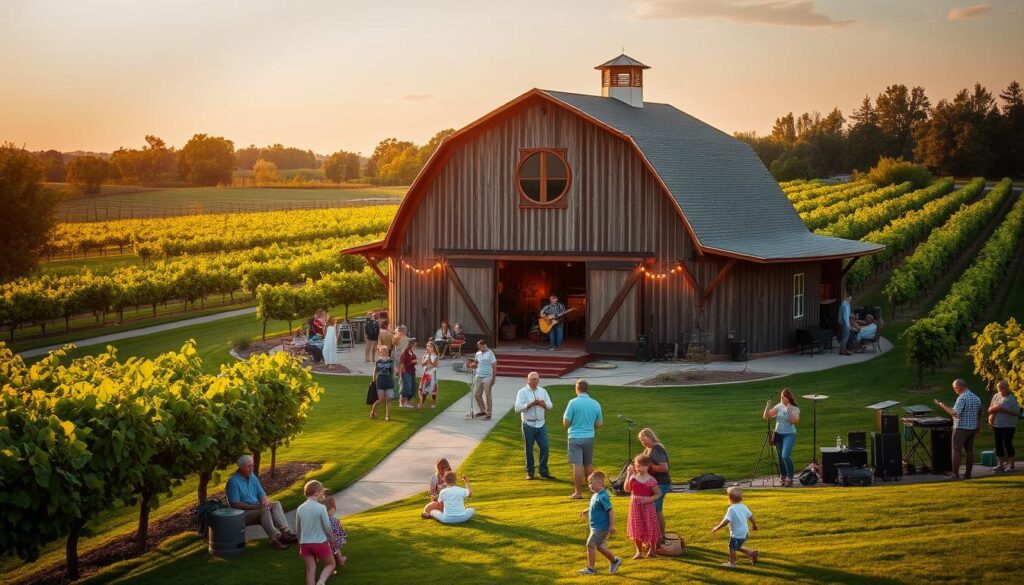
A Look at Other Top Wineries Across the US
Beyond the notable wineries explored previously, the United States features a rich tapestry of top wineries scattered throughout various wine regions. Each location offers diverse offerings and unique experiences that are clearly reflective of the local terroir.
Consider Mercer Wine, established in 1972 in the beautiful Horse Heaven Hills region. Their commitment to excellence showcases a range of critically acclaimed wines. Similarly, Pegasus Estate Winery in Santa Ynez Valley, founded by Michael Crowley and Peg, provides an inviting atmosphere along with exceptional vintages.
St. Francis Winery & Vineyards, founded in Sonoma County in 1971 by Joe Martin, exemplifies the marriage of tradition and innovation, employing sustainable practices and sophisticated techniques in their winemaking process. Luna Vineyards leans into its Italian roots by adopting traditional methods, ensuring minimal intervention in their winemaking.
Rocky Pond Winery, owned by David and Michelle Dufenhorst, cultivates exquisite wines from three vineyards, reflecting a commitment to quality. Numerous awards adorn many of these wineries, including Gold Medal winners like the 2017 Grenache and 2016 Cabernet Sauvignon, showcasing the remarkable talent found within these regions.
Among the esteemed wineries, Castello di Amorosa in Napa Valley has achieved significant recognition, winning 15 gold medals and best-of-class honors at various competitions in 2021. Becker Vineyards in Texas recently captured Best of Show Red for their outstanding 2019 Barbera, achieving a remarkable score of 96.

These examples represent just a snapshot of the vibrant landscape within America’s wine industry. Visiting these top wineries not only introduces you to diverse offerings but also invites you to experience the unique character and stories behind each bottle. Wine tasting becomes an adventure when you explore what each region has to offer, providing not only delicious wines but memorable moments and connections in the world of wine.
Conclusion
As you reflect on your exploration of America’s diverse wineries, it becomes clear that each establishment offers a rich tapestry of flavors and experiences. From the award-winning Paumanok Vineyards, with its accolades at the New York Wine & Food Classic, to the stylish ambiance of Wölffer Estate, the heart of wine tourism thrives in these unique locations. These American wineries not only elevate wine culture but also invite you to partake in unforgettable vineyard experiences.
Every visit to these wineries can deepen your appreciation of the craftsmanship behind each bottle. The dedication and quality found in regions like the North Fork of Long Island stand as a testament to why this area has garnered attention for its exceptional wines, such as the renowned cabernet franc and stunning chardonnays. Whether you’re visiting for a sparkling afternoon of tastings or planning a detailed wine tour, the allure of America’s wine country awaits you.
So, set your sights on the vineyards that captivate your interest and allow yourself to indulge in the journey of wine discovery. The unique stories, flavors, and landscapes that each winery offers will undoubtedly enhance your understanding of wine culture. With numerous award-winning wineries to explore, your next adventure in wine tourism is only a visit away.
